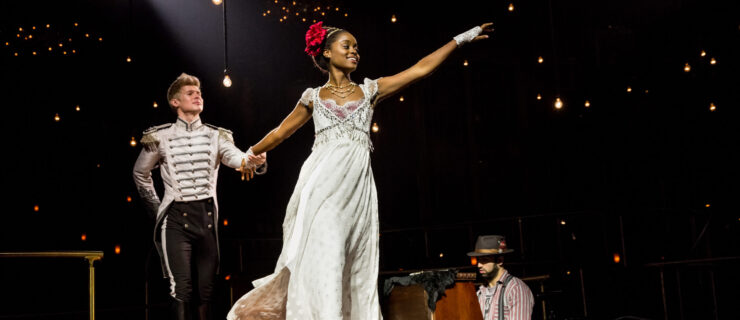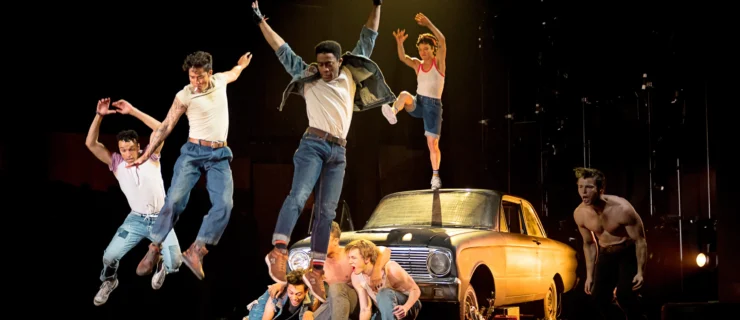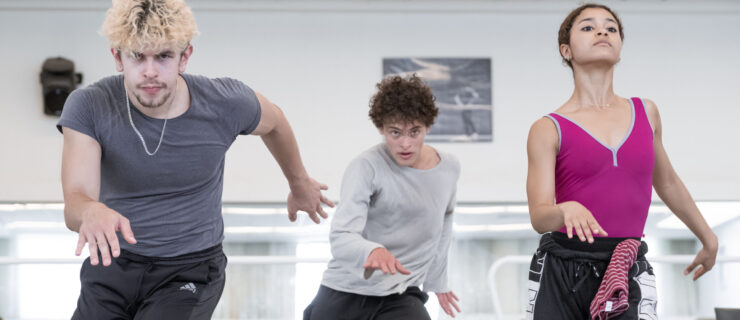Alberta Ballet's Othello
Alberta Ballet’s Othello
Southern Alberta Jubilee Auditorium, Calgary, Canada
October 25–27, 2007
Reviewed by Michael Crabb
With productions of A Midsummer Night’s Dream and Romeo and Juliet already to its credit, Calgary-based Alberta Ballet rounded out a cycle of Shakespeare-inspired ballets with the October premiere of a two-act Othello, choreographed by American Kirk Peterson.
With a score drawn from the compositions of Hollywood composer Jerry Goldsmith, rich and colorful period costumes by Sandra Woodall and evocative sets by Alexander Nichols, Peterson’s Othello has the superficial texture of an epic but thankfully does not forget that Shakespeare’s play is ultimately a very domestic tragedy.
Like Verdi in his 1887 opera version, Peterson dispenses with Shakespeare’s Venetian first act and begins the story in Cyprus where the Moorish general Othello has been sent to defend the island against the Turks. Here Iago, his evil and duplicitous ensign, weaves the web of lies and insinuations that fatally ensnares Othello and his blameless wife, Desdemona.
The play itself is complicated, even ambiguous. With only music and movement at his disposal, Peterson, like other choreographers before him, is obliged to simplify the plot while satisfying audience expectations for spectacular dance drama, well stocked with solos, pas de deux, and ensembles. By equipping Othello with a swashbuckling entourage and introducing a corps of six female “Furies”—in function akin to an ancient Greek chorus—Peterson is able to balance more intimate scenes of interaction between the handful of principal characters.
Using a full range of classical ballet steps, embellished with Oriental flourishes and the occasional modernistic contraction or spiral, Peterson packs his Othello with vivid, often inventive and technically challenging choreography. His use of movement leitmotifs also highlights distinctions of character, from the courtly elegance of Cassio to the muscular bravado of Othello and serpentine coiling of Iago.
Shakespeare critics still debate the true source of Iago’s venom, brilliantly evoked by Peterson’s choreography in an explosive opening solo, and in two subsequent, smoldering duets with Othello. The gullible general allows his instinctive jealousy to be enflamed by Iago. The latter, to judge by the homo-erotic suggestiveness of their varied grappling, appears driven as much by deep-rooted attraction as by hatred; repressed love sublimated into loathing.
Othello’s susceptibility is less clearly explained although in underlining his African heritage through costuming and movement motifs, Peterson hints at the insecurity of a mercenary outsider, suspiciously ill at ease within the society of his Venetian employers.
It is Iago’s complex psychology that clearly preoccupies Peterson. The ballet is as much if not more his story than that of the title character. It’s a thoroughly supportable interpretation and Peterson works it effectively, leaving us with the image of a defiant Iago, hauled aloft by the wrists as his punishment begins. It’s a Hannibal Lecter moment and deeply chilling.
Peterson’s choreography, both in its athleticism and embedded characterization, stretches and challenges the 26-dancer prairie company—augmented by students from the School of Alberta Ballet—to the limit. They responded with intense, dramatically focused performances, most notably from Canadian Kelley McKinlay, whose nuanced portrayal of Iago represents a milestone in the young dancer’s artistic development.




